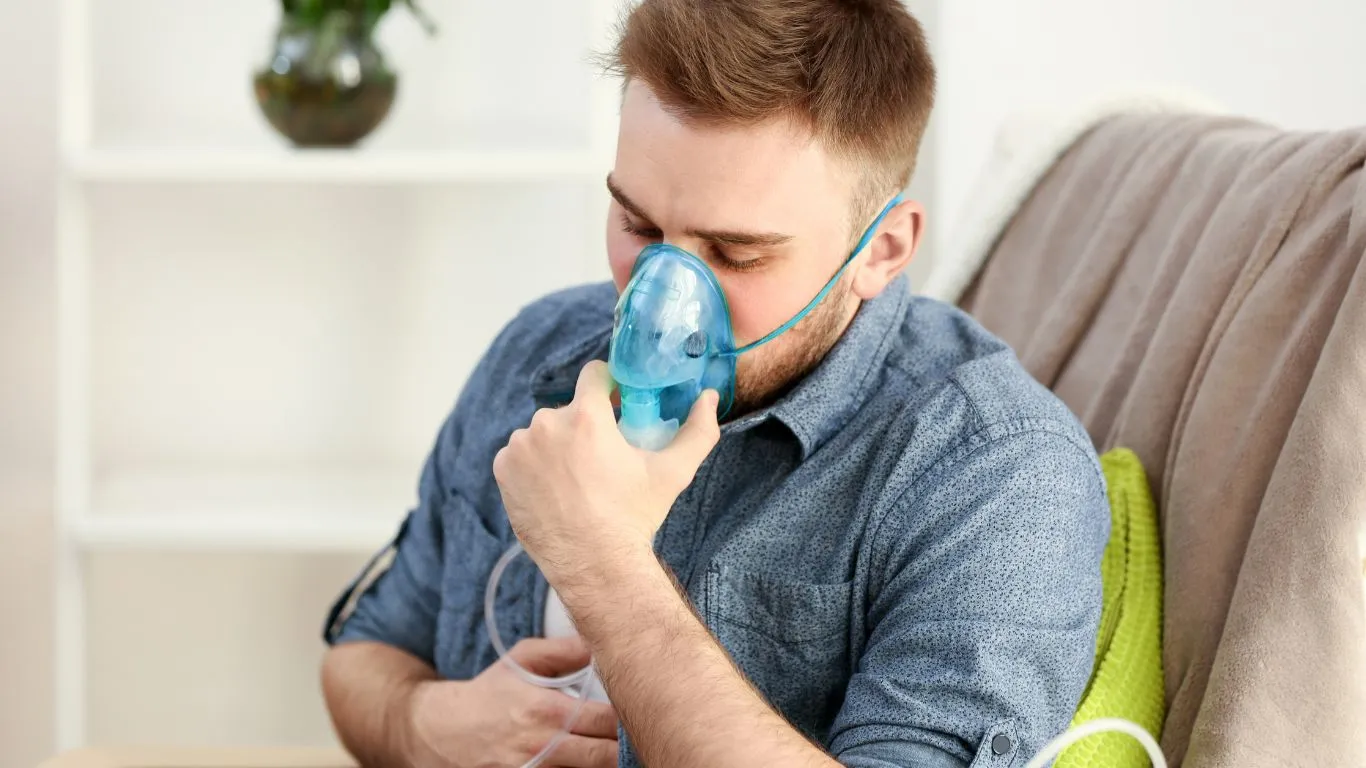Breathe Better: How to Improve Lung Function with Asthma Naturally
Living with asthma can feel like a constant uphill battle—one minute, you’re fine, and the next, you’re gasping for air. I know this all too well. Over the years, working as an asthma expert, I’ve met countless people desperate for one answer: how to improve lung function with asthma? The good news? It’s absolutely possible! While asthma might not have a cure, you can take proactive steps to strengthen your lungs, reduce flare-ups, and breathe easier. And trust me, once you make these changes, you’ll wonder why no one told you sooner.
Understanding Asthma and Lung Function

Before we dive into practical ways to improve lung function, let’s break down why asthma affects your lungs so much. Asthma is a chronic inflammatory condition that causes your airways to become narrow, swollen, and filled with mucus. This makes breathing difficult, especially during triggers like allergens, cold air, or exercise.
When your lung function is compromised, it means your lungs aren’t able to move oxygen efficiently through your body. This can lead to:
- Shortness of breath
- Frequent wheezing
- Chest tightness
- Fatigue from reduced oxygen intake
But here’s the thing—your lungs are adaptable! With the right strategies, you can train them to work better, even with asthma.
Breathing Exercises to Strengthen Your Lungs

One of the simplest and most effective ways to improve lung function with asthma is through breathing exercises. When done consistently, these exercises can help expand lung capacity, improve airflow, and even reduce asthma symptoms.
1. Diaphragmatic Breathing
Also known as “belly breathing,” this technique focuses on strengthening your diaphragm—a key muscle in the breathing process.
- Lie down or sit comfortably.
- Place one hand on your chest and the other on your belly.
- Take a deep breath in through your nose, ensuring your belly expands while your chest remains still.
- Exhale slowly through your mouth.
- Repeat for 5-10 minutes daily.
Why it works: It helps train your lungs to take in more air efficiently while reducing shortness of breath.
2. Pursed-Lip Breathing
This technique helps slow down your breathing and keeps airways open longer.
- Inhale deeply through your nose.
- Purse your lips as if you’re about to whistle.
- Exhale slowly through pursed lips, taking twice as long as your inhale.
- Repeat several times, especially during an asthma attack.
Why it works: It prevents airway collapse, making breathing easier and more controlled.
Stay Hydrated for Better Lung Function

Here’s an overlooked fact: hydration plays a huge role in lung function. When you don’t drink enough water, mucus in your lungs becomes thicker and harder to clear. This can lead to congestion and difficulty breathing.
To keep your lungs hydrated and functioning optimally:
- Drink at least 8 glasses of water per day.
- Incorporate hydrating foods like cucumbers, watermelon, and oranges.
- Use a humidifier in dry environments to keep airways moist.
Trust me, once you start drinking more water, you’ll notice a significant difference in how your lungs feel.
Exercise and Physical Activity for Stronger Lungs

Now, I know what you’re thinking—“Exercise? But I have asthma!” I get it. The idea of working out when you struggle to breathe can feel intimidating. But here’s the truth: the right kind of exercise can actually improve lung function with asthma. The key is finding activities that strengthen your lungs without triggering flare-ups.
1. Low-Impact Cardio
Forget about sprinting up hills or doing hardcore HIIT workouts. Instead, focus on low-impact exercises that boost endurance without putting too much strain on your lungs.
- Walking – A simple, effective way to improve lung capacity.
- Swimming – The moist air in pools helps open airways.
- Yoga – Enhances breath control and lung efficiency.
- Cycling – Great for stamina without intense impact.
Personal tip: Start slow and gradually increase intensity. Listen to your body—if you’re wheezing or feeling tight-chested, take a break.
2. Strength Training for Better Breathing
Building muscle, especially in your core and chest, can help improve breathing mechanics. Try incorporating:
- Light weightlifting
- Bodyweight exercises like push-ups and squats
- Resistance band workouts
Strengthening these muscles makes it easier for your lungs to take in and push out air, making breathing feel more effortless over time.
Diet and Nutrition for Optimal Lung Function

Believe it or not, what you eat has a direct impact on your lung health. The right foods can reduce inflammation, open up airways, and help your lungs work more efficiently.
1. Anti-Inflammatory Foods
Since asthma is an inflammatory condition, eating foods that fight inflammation can help ease symptoms.
- Leafy greens – Spinach, kale, and collard greens are packed with antioxidants.
- Fatty fish – Salmon, tuna, and mackerel contain omega-3s, which reduce airway inflammation.
- Turmeric – Contains curcumin, a powerful anti-inflammatory compound.
- Berries – Loaded with antioxidants that protect lung tissue.
2. Foods to Avoid
Just as some foods support lung function, others can trigger inflammation and worsen asthma symptoms.
- Dairy – Can thicken mucus, making breathing harder.
- Processed foods – High in preservatives that may trigger flare-ups.
- Soda and sugary drinks – Can cause inflammation and worsen lung function.
Pro tip: I always tell my patients to keep a food diary. Sometimes, certain foods trigger asthma symptoms without them realizing it.
Managing Triggers for Long-Term Lung Health
Avoiding asthma triggers is just as important as improving lung function. Even if you do everything right—exercise, eat well, and hydrate—exposure to triggers can set you back.
1. Allergens and Irritants
Common allergens and irritants can wreak havoc on your lungs. Some of the biggest culprits include:
- Pollen – Check air quality reports and avoid peak pollen hours.
- Dust mites – Use allergy-proof bedding and vacuum regularly.
- Pet dander – If you have pets, groom them often and keep them out of your bedroom.
- Smoke – Stay away from cigarette smoke and strong fumes.
2. Stress and Anxiety
Did you know that stress can trigger asthma symptoms? When you’re anxious, your breathing becomes shallow and erratic, making it harder to get enough air.
To manage stress:
- Practice meditation and mindfulness.
- Do deep breathing exercises daily.
- Engage in activities that help you relax, like reading or listening to music.
Trust me, I’ve seen patients transform their asthma symptoms simply by reducing stress levels.
Case Studies & Real-Life Examples

Sometimes, the best way to believe something works is to hear real-life success stories. I’ve worked with many people who struggled with asthma but were able to dramatically improve their lung function by making simple yet powerful lifestyle changes. Let me share a few inspiring examples.
Case Study #1: Sarah’s Journey to Stronger Lungs
Sarah, a 35-year-old teacher, came to me feeling frustrated. Her asthma had worsened over the years, and she was relying on her inhaler multiple times a day. She wanted a way to breathe easier without always feeling restricted.
What changed?
- She started pursed-lip breathing every morning and night.
- She swapped processed snacks for anti-inflammatory foods like turmeric and leafy greens.
- She began walking 20 minutes daily, gradually increasing to light jogging.
The result? Within 8 weeks, her reliance on her inhaler decreased significantly. She had fewer flare-ups, better stamina, and felt more in control of her asthma.
Case Study #2: Mark’s Exercise Breakthrough
Mark, a 42-year-old former athlete, avoided working out because exercise triggered his asthma. He wanted to get back into shape but feared constant wheezing.
What changed?
- He focused on swimming—a low-impact activity with moist air.
- He used a humidifier at home to keep airways open.
- He started incorporating strength training with resistance bands.
The result? Within 3 months, Mark was back in the gym, doing workouts he thought were impossible before.
Key Takeaways: What You Need to Remember
We’ve covered a lot of ground! Let’s break down the most important steps you can take to improve lung function with asthma:
- Practice breathing exercises like diaphragmatic and pursed-lip breathing daily.
- Stay hydrated to keep airways clear and mucus thin.
- Incorporate low-impact exercise like walking, swimming, or yoga.
- Eat anti-inflammatory foods and avoid dairy and processed foods.
- Manage triggers by controlling allergens and reducing stress.
By following these steps, you’ll be on your way to breathing easier and feeling better.
FAQs
1. Can lung function actually improve if I have asthma?
Yes! While asthma is a chronic condition, you can strengthen your lungs and improve your breathing capacity with the right exercises, diet, and lifestyle adjustments.
2. What’s the best exercise for someone with asthma?
Swimming is often the best option because the warm, moist air helps keep airways open. But walking, yoga, and cycling are also great choices.
3. How do I know if my asthma is getting worse?
If you notice increased shortness of breath, needing your inhaler more frequently, or struggling with nighttime wheezing, it’s time to check in with your doctor.
4. Do air purifiers help asthma?
Yes! Air purifiers can remove dust, pollen, and pet dander from your environment, reducing asthma triggers.
5. Can diet really affect asthma?
Absolutely! Inflammatory foods can make asthma symptoms worse, while a clean, nutrient-rich diet can reduce flare-ups and support lung health.
Bonus: Additional Resources or DIY Tips
If you’re serious about improving your lung function, here are some extra tools and tips:
- Use a Peak Flow Meter: Track your lung capacity and see improvements over time.
- Try a Salt Inhaler: Some people find that dry salt therapy helps clear airways.
- Essential Oils: Eucalyptus and peppermint can aid breathing when used properly.
- Join a Support Group: Connecting with others who have asthma can be incredibly motivating.
Appendix: References, Disclaimer, and Call to Action
For further reading, check out these trusted resources:
Disclaimer: This article is for informational purposes only and should not replace professional medical advice. Always consult your doctor before making changes to your asthma treatment plan.
Ready to take control of your breathing? Start incorporating these strategies today and share your progress! Have any personal tips that worked for you? Drop them in the comments!

Bianca Nala is a compassionate Nurse Practitioner with a strong background in primary and respiratory care. As a health writer for Healthusias.com, she combines her clinical expertise with a talent for clear, relatable storytelling to help readers better understand their health. Bianca focuses on topics like asthma, COPD, chronic cough, and overall lung health, aiming to simplify complex medical topics without losing accuracy. Whether she’s treating patients or writing articles, Bianca is driven by a single goal: making quality healthcare knowledge accessible to everyone.






